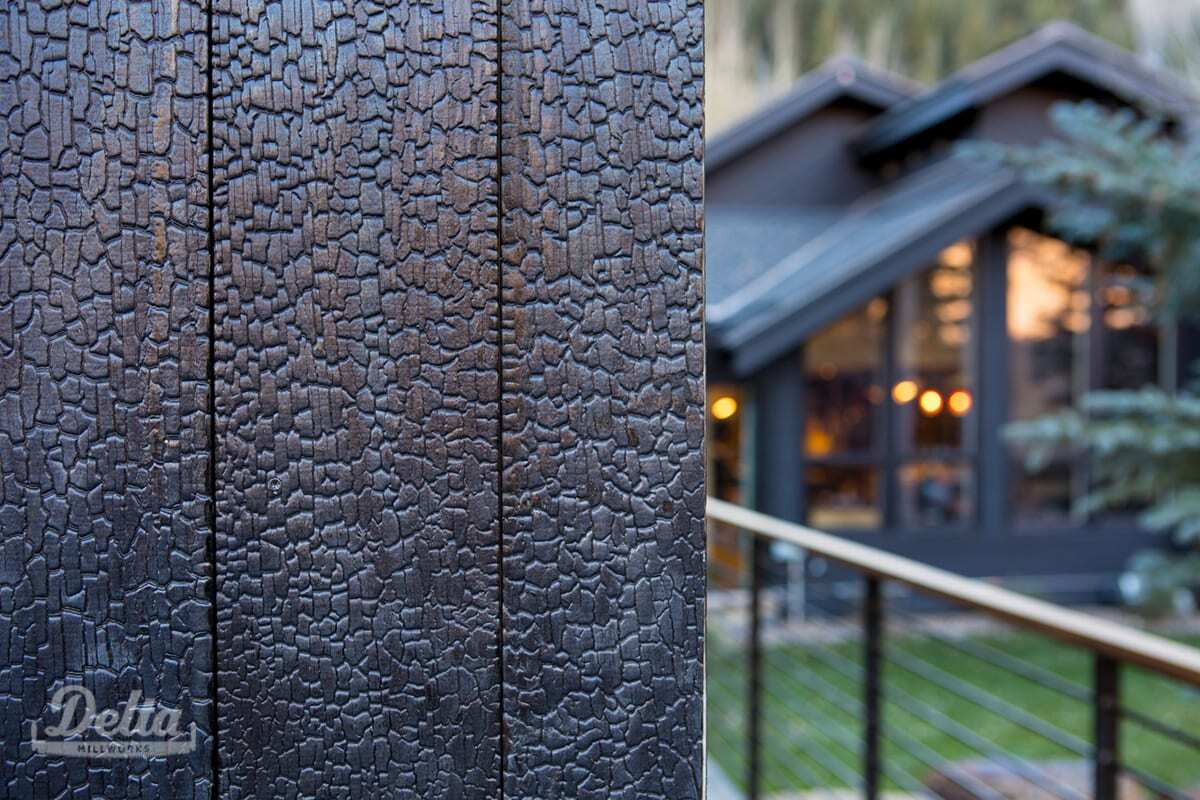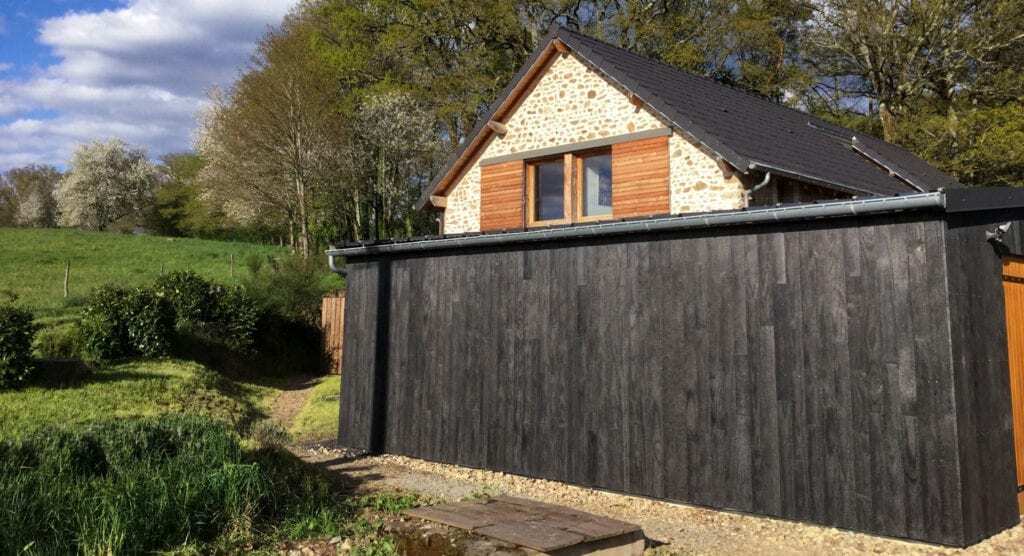Delta Millworks began finishing and charring Accoya out of a need to adapt shou-sugi-ban to modern architecture. The Japanese burned their native species wood for centuries, which served a sacred and practical purpose. However, the original burned wood was not used in high traffic commercial and residential areas.
When shou-sugi-ban became a trend in modern design almost a decade ago, differing schools of thought emerged as to which species burned best. Some associate cedar with the traditional Japanese technique (the literal translation means “fire cedar board”), while others advocated for cypress on exteriors, as it was most similar to the Japanese species. Delta explored both avenues, but consistently found those species and others always had their flaws. In some instances, a wood didn’t have a durable enough surface, where in others the wood moved, rendering a nice finish useless if the wood did not remain stable. Species did not live up to the low maintenance expected of present-day building materials. Through Delta’s relationship with architects all over the country, we were introduced in various libraries to Accoya.
Delta Millworks became the world’s leading producer of charred wood because we were willing to take a torch to a Douglas Fir timber in 2007. The same pioneering spirit and a bit of pyromania caused us to try out Accoya’s charring ability. We were completely blown away by the stability of the wood and durability of its charred surface. Quickly, Delta established a relationship with Accoya and Universal Forrest Products. Our Katana line was soon born out of burned Accoya, which has become our number one product and most used in 2016.
We now have shipped nearly 60 Accoya jobs, both burned and non-burned, with hundreds more in the specification stages. We get deep joy from introducing this wood to designers, builders and professionals all over the world. It is a product we would like to bring to everyone. Accoya’s exceptional qualities make it a product that can perform well regardless of climate. Delta’s Charred Accoya is found in Seattle, upstate New York, France, the Texas Hill Country, Southern California, the Deep South, the Midwest, British Columbia, the Rockies and in beautiful interior applications everywhere.
We’re tremendously proud of our charred and non-charred Accoya finishes and are thrilled to offer a little- to no-maintenance product, which is not easy to do when it comes to wood. We have greatly enjoyed and value our partnership with Accsys. Continue to look for this wonderfully stable material with a beautiful finish in designs everywhere. Using Accoya wood in the shou-sugi-ban technique combines old world traditions and new world materials in a special way.
A reminder on Accoya
What is Accoya made from? Accoya is made primarily from Radiata Pine. It’s a dense softwood that lasts for long periods of time and takes stains/paints well. All sources are well-managed and sustainable to safeguard against deforestation and overuse. Accoya is FSC certified and Cradle to Cradle Gold certified.
Why is Accoya made? The primary reason that wood swells and shrinks is because it contains an abundance of “free hydroxyls” (OH groupings). These groups absorb and release water according to the climate. This is why you see warping and cupping, as moisture causes the wood to change shape. Enzymes also digest wood at these free hydroxyl sites, leading to rot and decay. Accoya is created to insure a more dimensionally stable and durable wood siding.
How is Accoya made? To create Accoya, Accsys reacts Radiata Pine with acetic anhydride (vinegar: in the dilute form). When the free hydroxyl group reacts with the acid, it creates an acetyl group and the ability of the wood to absorb water is drastically reduced.
What are Accoya’s benefits?
- Accoya lasts 50 years above ground and 25 years in the ground or freshwater
- Ranks 1st in stability among siding species
- Is rot proof
- Reduces swelling and shrinking by 75%
- Greatly reduces maintenance, as paints, stains and varnishes last four times longer
- Is indigestible to a wide range of insects (including termites)
- Increases hardness and high strength to weight ratio
- Easier to coat (less prep and sanding)
- Superior resistance to UV
- Offers improved insulation
- Is an environmentally-friendly substitute, as it is CO2 negative over the full life cycle
- Is reusable and recyclable









